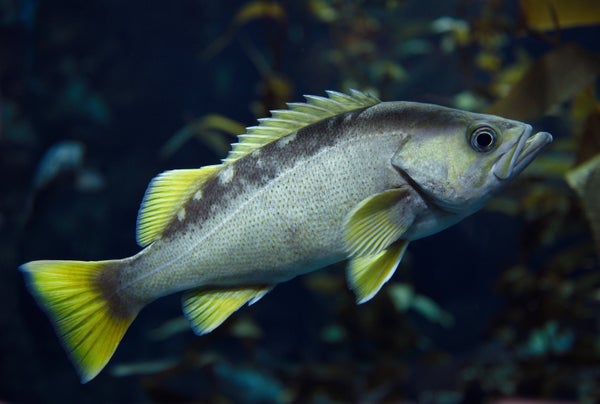Few groups of animals encapsulate the extremes of longevity more than fish. While coral reef pygmy govies survive for less than ten weeks, Greenland sharks can endure more than 500 years. So when a team of biologists at the University of California, Berkeley, wanted to explore the genetics of aging, they grabbed their fishing gear.
Their preferred catch was rockfish. Found in coastal waters from California to Japan, rockfish are a colorful group of more than 120 species in the genus Sebastes. Some of these closely related species live for only a decade. Others, such as the rougheye rockfish, can live for more than 200 years.
The diversity of rockfish life spans offered the perfect parameters for parsing the genetics behind longevity, according to U.C. Berkeley biologist Peter Sudmant. In a study published on Thursday in Science, Sudmant and his colleagues sifted through the genomes of 88 rockfish species and pinpointed 137 specific genes that boosted the life spans of species such as the rougheye.
On supporting science journalism
If you're enjoying this article, consider supporting our award-winning journalism by subscribing. By purchasing a subscription you are helping to ensure the future of impactful stories about the discoveries and ideas shaping our world today.
Some of the fishes’ longevity comes from their size and habitat. When it comes to achieving longer life spans, scientists have found that bigger organisms often have an advantage because they have a slower metabolism and are less susceptible to predation. Similarly, colder environments can slow a creature’s metabolism: for example, frigid waters make it possible for Greenland sharks to survive for centuries.

Rockfish lifespans. Credit: PH Sudmant
The study confirmed that some rockfish use both strategies by slowly growing large in the chilly waters along the seafloor as they spawn new generations. “Rockfish are the perfect storm: they live deep in the water, and some of these old moms grow to be very large,” Sudmant says. “You have all these things at play that allow them to live for a very long time.”
By comparing the genomes of short-lived rockfish with longer-lived species, the researchers were also able to identify particular genes that increase longevity. For example, longer-lived rockfish sported more genes associated with mending damaged DNA, presumably making them less susceptible to certain cancers than their shorter-lived kin. The researchers also found that longer-lived species had multiple genes geared toward regulating insulin, a capability linked to longevity in other animals. Another group of genes, known as the butyrophilins, regulates the rockfish immune system. Sudmant notes that similar genes have been tied to suppressing inflammation in aging humans.
While these genes’ benefits may conjure thoughts of science-fiction-esque crossbreeding experiments, Sudmant is quick to pump the breaks. “We’re not going to make hybrid rockfish humans and live forever,” he says. This study’s finding, however, “allows us to potentially think about what pathways and genes should be the key targets in our studies on humans and the drugs we develop.”
Longevity may be an aspiration for humans, but it is a requirement for certain rockfish species, says Sabrina Beyer, a fish ecologist pursuing her Ph.D. at the University of California, Santa Cruz. It takes some species decades to reach reproductive maturity, and few of their larvae reach adulthood. To combat these long odds, female rockfish need to produce vast amounts of larvae per year. According to Beyer, who researches rockfish in affiliation with the National Oceanic and Atmospheric Administration’s National Marine Fisheries Service and was not involved in this study, older females produce disproportionately more larvae than their younger counterparts. “There's a real incentive in these rockfishes to grow big and live long and produce lots of high-quality larvae,” she says.
Many rockfish are commercially and recreationally fished for food along the West Coast, threatening certain species with extinction. Overfishing and environmental shifts prove more disastrous for long-lived rockfish species because they usually exhibit lower genetic diversity than their short-lived kin, Beyer says. “We can’t have heavy fishing pressure on these long-lived, slow-growing species,” she adds. “It’s just not what they’re adapted to.”
